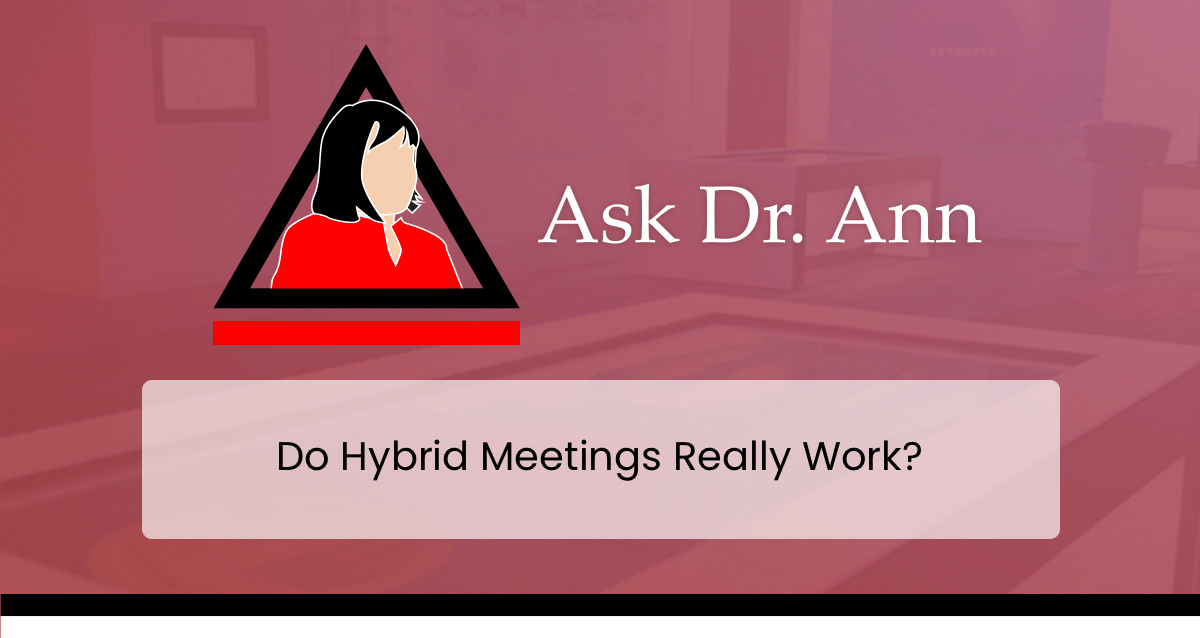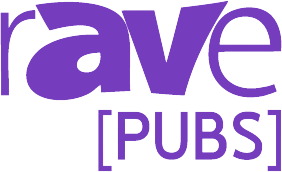Ask Dr. Ann: Do Hybrid Meetings Really Work?

Do hybrid meetings really work for both in-person and remote participants? Or is meeting equity just another buzzword?
Simple answer: Yes, hybrid meetings really work for both in-person and remote participants if technology, connectivity and environmental issues are addressed. Keep in mind any meeting is only as good as its weakest link. If people have trouble connecting, cannot hear and the environment in which they are participating is noisy and dark, the meeting may suffer. Meeting equity can be achieved if all factors for participation are addressed.
Equipment improvements have resulted in equity being achieved much of the time given camera adjustments for lighting and the installation of better sound systems within the equipment. For sites still having issues with lighting and acoustics, making improvements can be done for less than $1,000 per room by using improved light fixtures, installing portable up lighting to bounce light off the ceiling, carpeting floors (even if only using an area rug), installing draperies on walls and covering tables. The best way to test effectiveness is to connect two sites and ask the distance participants to evaluate the site and sound qualities.
A hybrid meeting or event refers to any meeting, conference or seminar that has both a physical “in-person” format and a “virtual” online component. The online component is meant for remote attendees but may also be accessed by the in-person attendees.
With proper planning, hybrid meetings and events work for both in-person and remote participants. To be successful, it is important to consider what mix of hybrid and in-person works to achieve goals and adhere to budgets. Contingency planning is also a must considering technology, connectivity and meeting participant issues are bound to arise.
Hybrid meetings are convenient and have become popular due to the pandemic. They allow people to participate from their desktop or mobile device anywhere in the world. I have worked remotely for over 40 years. I have long-term relationships with several people I have never met in-person and the work has not suffered. For me, hybrid meetings are successful.
Advantages
Expanded Audience Base
There is often a high barrier of entry to attending in-person events due to travel restrictions/costs, health concerns and quarantine issues. Enabling attendees to view the event, and presenters to contribute virtually, can overcome obstacles, create a more content-rich event, and allow access to a larger audience and presenter base. Virtual events and live streaming allow participants to view content on demand.
Improve Accessibility and Inclusivity
In a hybrid environment, where attendees can attend a meeting without the need to do so in person, people with disabilities or travel restrictions are given the same opportunities to access content that would traditionally be discussed in an in-person physical setting. These people now feel they are on a level playing field with everyone else.
More Eco-Friendly
Hybrid events are eco-friendly given the entire event can be done virtually, resulting in nothing to build or throw away. Virtual reality can be created to allow speakers to be at a podium, inside an auditorium or appear in a virtual space even if physically located on opposite sides of the world.
Powerful Sponsor Opportunities
Hybrid events have enabled sponsors to try innovative marketing and promotions using livestreaming of products for sale. Consumers can also get discounts with a click from their mobile device. These events may result in higher audience engagement and the ability to obtain valuable data from attendee feedback and participation.
Disadvantages
- Remote attendees may feel less involved. Attendees are often not included during side conversations.
- Some participants may find it difficult to set up the technology and handle any technology issues. There may be connectivity and coordination issues. Participants may find changing the way they meet a challenge.
In-Person Meetings and Events
Pros
- Face-to-face connection.
- Easier brainstorming and collaboration.
- Everyone is in the same space with a shared experience.
- Can boost morale for attendees and combat remote meeting fatigue.
Cons
- Travel costs.
- Time and resources required for planning and execution.
- Not inclusive of people unable to attend the meeting.
Real-time vs. Asynchronous Meetings
A challenge of a hybrid meeting is facilitating communication. In-person meetings happen in real-time. Hybrid meetings are not always synchronous. When communication is asynchronous it means the sending and receiving of information may be disrupted by time delays. A presenter may create a digital version of the presentation and make it available for viewing at a later time. This allows people to choose when to access the meeting content. This is especially valuable for people located in different time zones or unable to attend a specific meeting due to a scheduling conflict.
Pros
- These meetings are often recorded and searchable.
- Ability to concentrate on information when timing is convenient.
- Participants have the ability to process information before providing a response.
- No scheduling conflicts since people participate when it is best for them.
Cons
- More difficult to facilitate a spontaneous group discussion.
- People respond at different paces which could slow down the meeting process of information gathering and decision-making.
The pandemic taught us the value of time and how draining it can be when too much time is spent in meetings. People need time to think, write and engage with others in a variety of ways. Attending meetings all day long prevents the ability to process information. Use meetings to be creative and share ideas with one another.
Brainstorming sessions benefit from people gathering together. Strengthening connections among team members are usually accomplished more effectively in person. The virtual format for meetings is more inclusive. There is no jet lag to contend with or extra travel time needed. There are fewer financial obstacles and people with young families or acting as caregivers for ill or aged relatives are able to participate. There are meeting techniques that make hybrid and in-person meetings successful. The use of both types of meetings is here to stay, and it is important to be prepared to share information in-person and virtually.
“Ask Dr. Ann” is a series of columns in which Dr. S. Ann Earon answers your questions about all things UCC. Do you have a question that you’d like her to consider for her next column? Submit your question(s) here!





